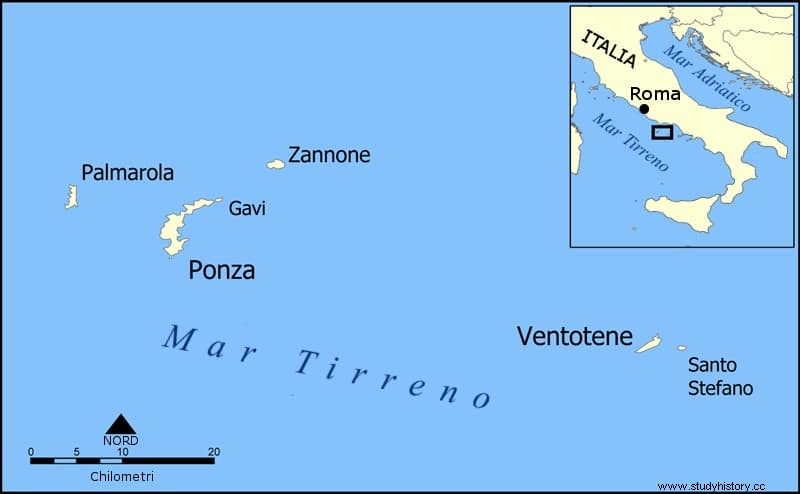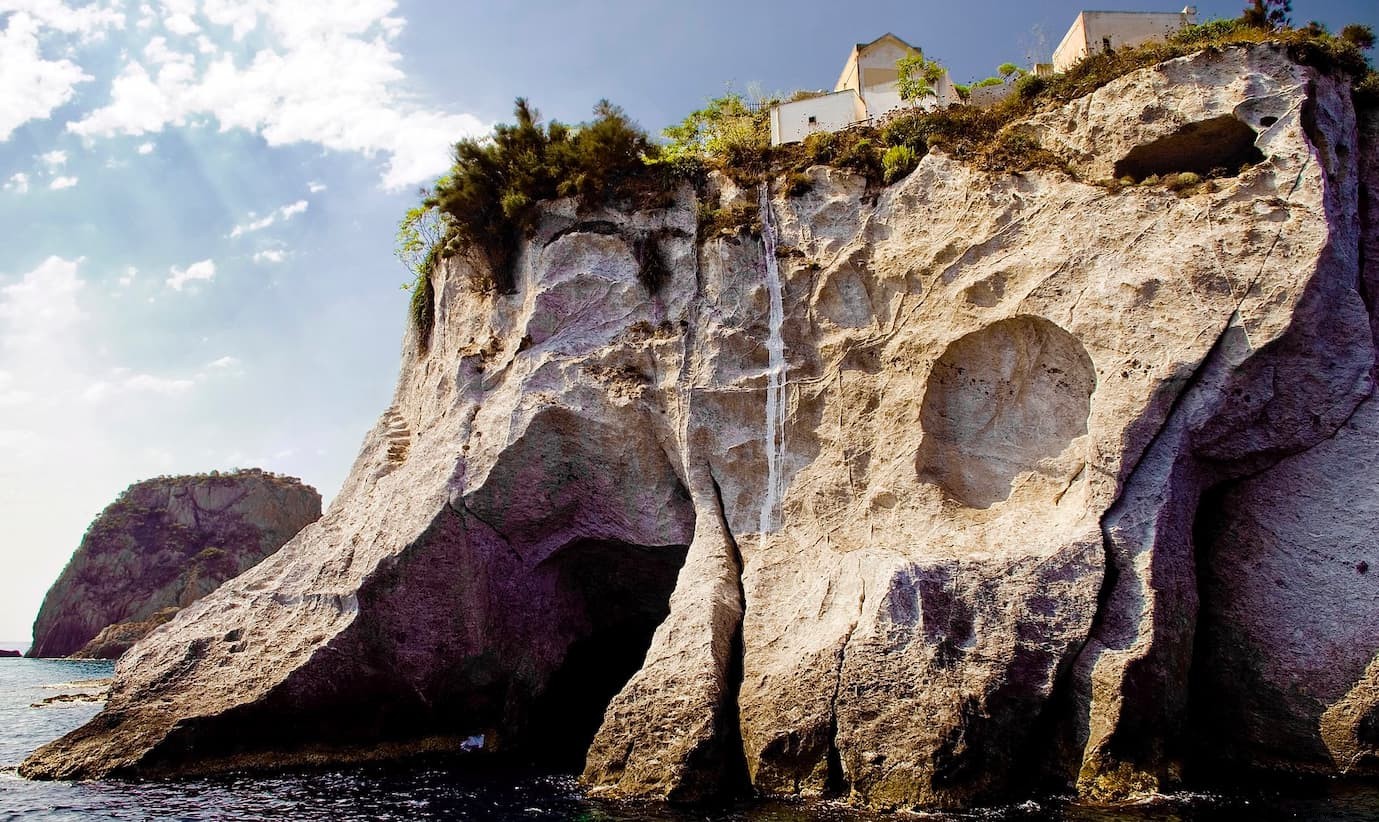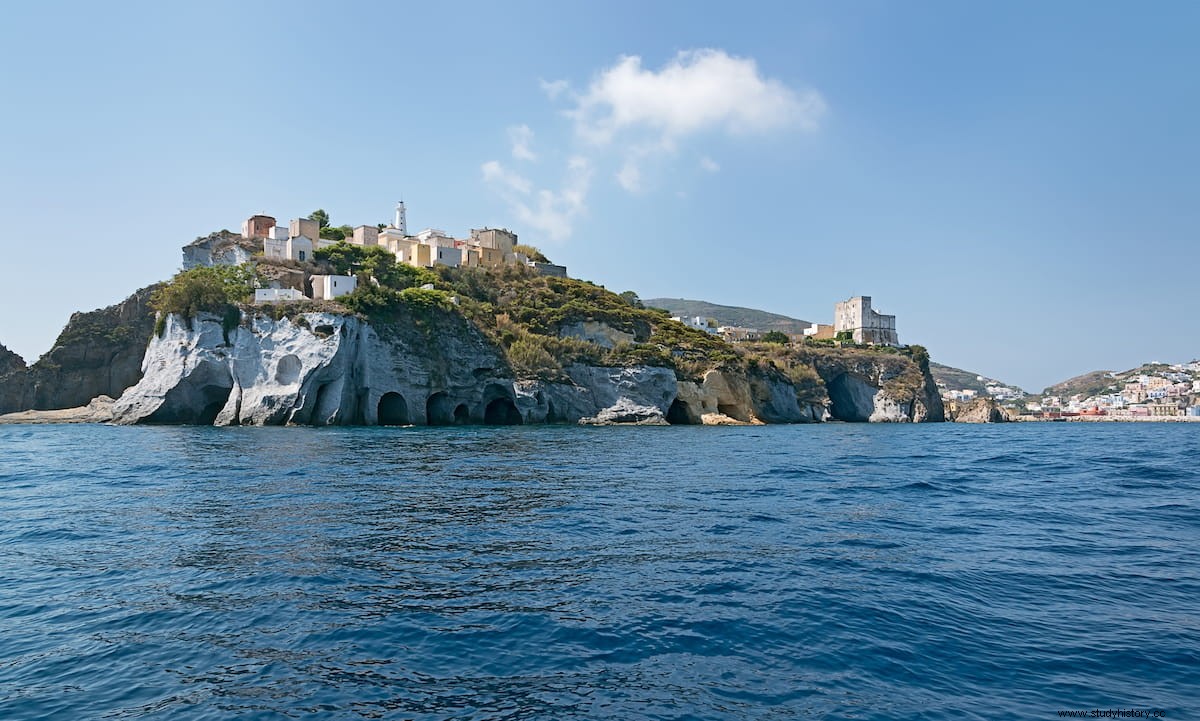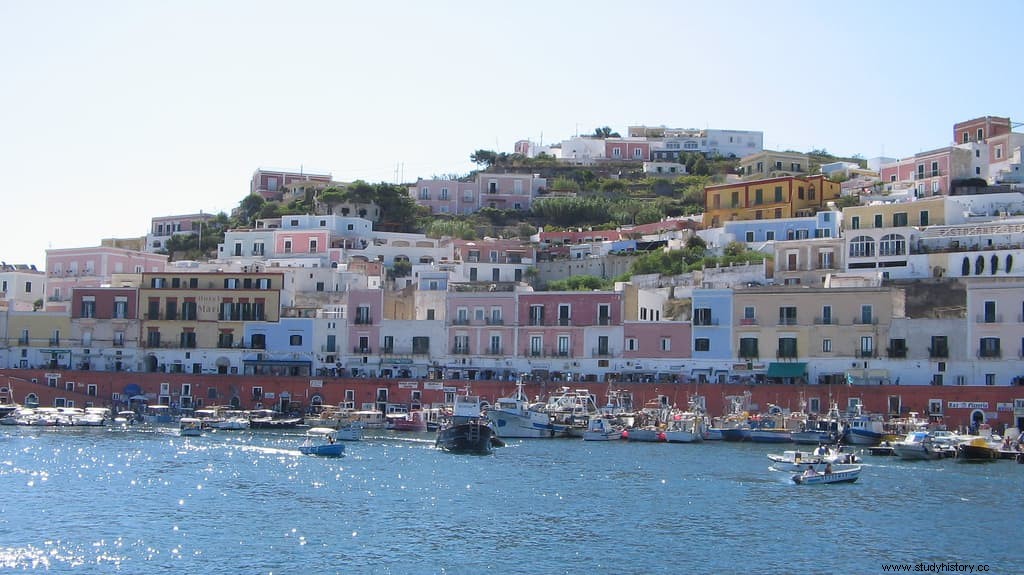Ponza Island is the largest of the Pontine Islands, located about 33 kilometers south of Cape Circeo on the coast between Rome and Naples.
One of its many attractions are the many caves and tunnels excavated since ancient times, among which the system of 5 caves called Grotte di Pilato stands out. (Pilate's Caves). They are located southeast of the port of Ponza, at the foot of the hill of the Madonna and under the town's cemetery.

They were rock-cut and meticulously carved, including with decorations below sea level, in the 1st century BC. They are connected by underwater tunnels to four covered tanks and a large outdoor pool or cistern, which was used as a pond for breeding fish, most likely moray eels, a fish that was considered sacred by the Romans for its supposed propitiatory gifts.
This tank has five openings that were closed with gates to allow the water to enter and exit, and the transfer of the fish to one of the other 4 covered tanks.
However, some scholars disagree that the caves had this fish farm function, indicating that in periods of heavy seas and high tide the edge of the tanks is submerged, which would have allowed the fish to escape. They believe, on the contrary, that they had a spa function, with the pools and tanks used for sea baths.

And it is that in imperial Rome bathing in the open sea was a plebeian custom with which the patricians would never have profaned their social status.
In addition, members of the imperial family were prohibited from bathing in public, Titus being (according to Suetonius) the first and only emperor to do so.
On the other hand, the three rows of marble-covered steps on the floor of the main pool would prove that the caves were indeed a spa.

In the walls there are niches that could have contained statues of gods, and in 1997 archaeological excavations found a sculpture of Apollo or Dionysus carved in white marble along with a small tuff altar and some terracotta lanterns.
The caves were connected to a large Roman villa by a wide staircase. The remains of this villa, which belonged to Emperor Augustus, are still visible on the hill.
This reinforces the theory that the caves were the private spa of the emperor and his family. Today the caves can only be accessed from the sea.

The name of the caves is based on the legend that a young Pilate was sent to put down a revolt and appointed governor of the island (from which he took the name Pontius). After succeeding in the mission he was sent to Palestine and the rest is known history.
But they are not the only grottos or caves in Ponza. The island is famous for its Blue Grottoes , excavated by the Etruscans, the first colonizers of the archipelago. And also through the Roman underground tunnel that connects the city with the beach Chiaia di Luna .
Fonts
Visit Ponza / Zingarate Blog / iPonza / Ponza Racconta (Ernesto Prudente) / Wikipedia
